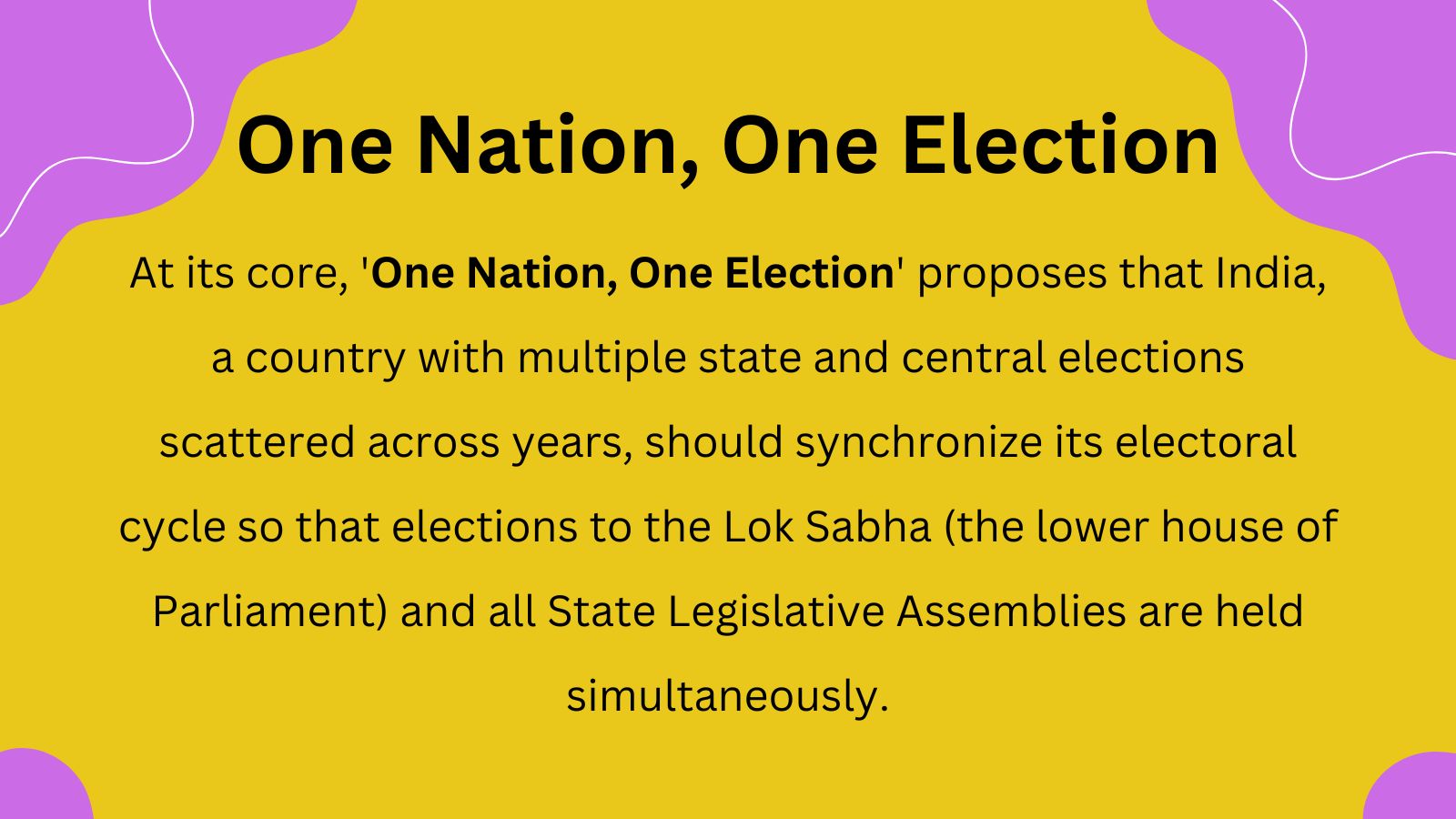One Nation, One Election
by Yogi P - September 1, 2023
One Nation, One Election: A Deep Dive
The concept of ‘One Nation, One Election’ has increasingly become a topic of discussion in the political, academic, and public circles of India. But what exactly is this idea, and why has it stirred such interest? This blog aims to shed light on the matter, exploring its potential advantages and challenges.
What is ‘One Nation, One Election’?
At its core, ‘One Nation, One Election’ proposes that India, a country with multiple state and central elections scattered across years, should synchronize its electoral cycle so that elections to the Lok Sabha (the lower house of Parliament) and all State Legislative Assemblies are held simultaneously.
The Historical Context
Interestingly, India initially had the system of simultaneous elections post-independence, from 1951 to 1967. However, due to various political reasons, such as the dissolution of certain State Assemblies and the imposition of President’s Rule in some states, this synchronicity was disrupted.
Potential Advantages:
- Cost-Effective: Conducting elections in India is an expensive affair. By clubbing state and central elections together, the overall cost could be reduced significantly.
- Better Governance: With multiple elections, the Model Code of Conduct (MCC) kicks in quite frequently, putting a halt to developmental projects and policy implementations. One Nation, One Election could ensure prolonged periods of uninterrupted governance.
- Reduced Polarization: The continuous election cycle keeps the political parties in perpetual campaign mode. Simultaneous elections might reduce this constant politicking, leading to lesser polarization among communities for vote bank politics.
- Higher Voter Turnouts: A combined election might spur greater voter interest, leading to a better turnout, as people will vote for both state and central representatives.
The Challenges:
- Huge Logistical Challenge: Simultaneous elections would mean massive logistical requirements in terms of electronic voting machines (EVMs), security personnel, and election staff.
- Potential Policy Neglect: With the focus spread across the country, specific state or regional issues might get overshadowed by national narratives.
- Political Instability: If a coalition government at the center or in states falls due to lack of majority, it could potentially disrupt the synchronized cycle.
- Overwhelming for Voters: Voters might find it confusing or overwhelming to make informed decisions about both state and central representatives simultaneously.
Implementing the Concept:
Realizing ‘One Nation, One Election’ would require several constitutional and logistical changes. An initial idea floated involves shortening or extending the term of certain state governments to align them with the central election. Additionally, the Election Commission of India would need a vast amount of additional resources, from EVMs to personnel.
Global Precedents:
Simultaneous elections are not unique to India. Countries like South Africa, Sweden, and Belgium hold national and provincial elections simultaneously.
Conclusion:
While ‘One Nation, One Election’ offers many potential benefits, its successful implementation requires comprehensive planning and consensus-building among all major political stakeholders. Whether India will re-embrace this model remains to be seen, but the debate it has triggered is indeed a reflection of the country’s vibrant democratic spirit.










